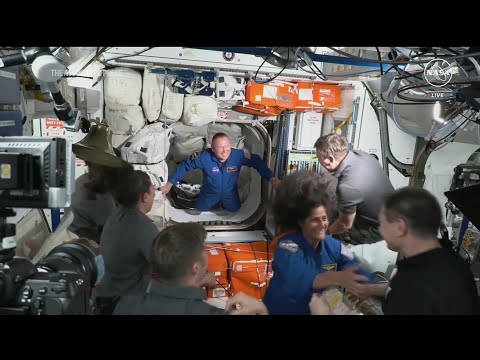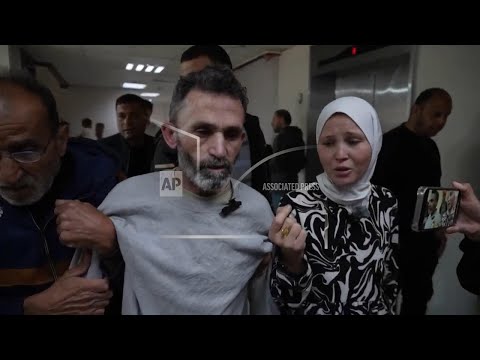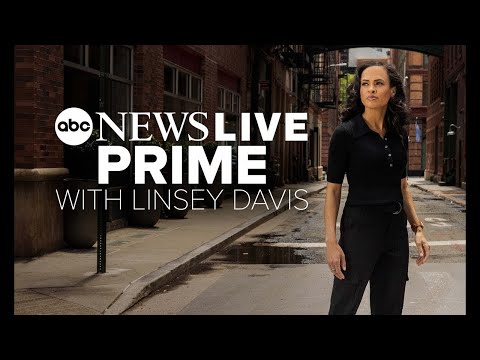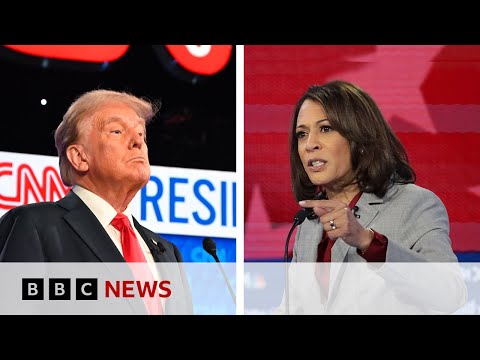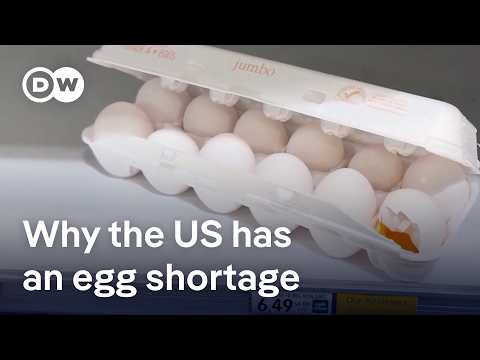(6 Jun 2024)
RESTRICTION SUMMARY: MUST CREDIT NASA
++ON SCREEN GRAPHICS AND COMMENTARY AT SOURCE++
NASA – MUST CREDIT NASA
International Space Station – 6 June 2024
1. Boeing’s Starliner capsule approaching the International Space Station
NASA – MUST CREDIT NASA
Houston – 6 June 2024
2. Mission control room at the Johnson Space Center
NASA – MUST CREDIT NASA
International Space Station – 6 June 2024
3. Various of Starliner approaching the International Space Station
4. Starliner capsule docking
NASA – MUST CREDIT NASA
Houston – 6 June 2024
5. Mission control room
NASA – MUST CREDIT NASA
International Space Station – 6 June 2024
6. Starliner capsule docked at International Space Station
7. Interior of space station as astronauts await hatch opening
8. NASA test pilots Butch Wilmore and Suni Williams floating in
9. Astronauts greeting one another and celebrating
STORYLINE:
Boeing’s new capsule arrived at the International Space Station on Thursday, delayed by last-minute thruster trouble that almost derailed the docking for this first test flight with astronauts.
The 260-mile-high (420-kilometer-high) linkup over the Indian Ocean culminated more than a day of continuing drama for Boeing’s astronaut flight debut carrying NASA test pilots Butch Wilmore and Suni Williams.
Boeing plans to keep Starliner at the space station for at least eight days before guiding it to a landing in the western U.S.
Williams entered the space station first, dancing on the way in to music. Wilmore followed, snapping his fingers. They embraced the seven space station residents.
The Starliner capsule already had one small helium leak when it rocketed into orbit with two NASA astronauts Wednesday. Boeing and NASA managers were confident they could manage the propulsion system despite the problem and that more leaks were unlikely. But just hours into the flight, two more leaks cropped up.
Later, four of the capsule’s 28 thrusters went down. The astronauts managed to restart three of them, providing enough safety margin to proceed. By then, Starliner had passed up the first docking opportunity and circled the world for an extra hour alongside the station before moving in.
It was not immediately known whether the thrusters problems were related to the earlier leaks.
Earlier in the day, before the thrusters malfunctioned, Boeing spokesman Jim May said the helium leaks posed no safety issues for the astronauts or the mission.
Helium is used to pressurize the fuel lines of Starliner’s thrusters, which are essential for maneuvering. Before liftoff, engineers devised a plan to work around any additional leaks in the system. A faulty rubber seal, no bigger than a shirt button, is believed responsible for the original leak.
After the space shuttles retired, NASA hired Boeing and SpaceX to ferry astronauts to and from the space station. SpaceX’s taxi service began in 2020. Boeing was supposed to start around the same time, but was held up for years by safety concerns and other troubles.
___
The Associated Press Health and Science Department receives support from the Howard Hughes Medical Institute’s Science and Educational Media Group. The AP is solely responsible for all content.
===========================================================
Clients are reminded to adhere to all listed restrictions and to check the terms of their licence agreements. For further assistance, please contact the AP Archive on: Tel +44(0)2074827482 Email: info@aparchive.com.
Find out more about AP Archive: http://www.aparchive.com/HowWeWork
Twitter: https://twitter.com/AP_Archive
Facebook: https://www.facebook.com/APArchives
Instagram: https://www.instagram.com/APNews/
You can license this story through AP Archive: http://www.aparchive.com/metadata/youtube/aaa06de0bf834eb69b1d36cf75fb8b63

